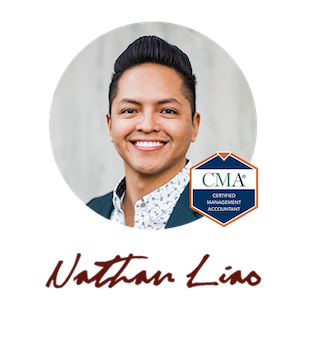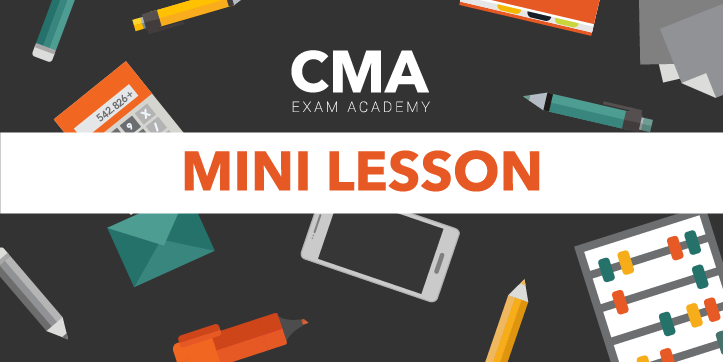Student Question:
“Dear Nathan
Good morning,
I have small queries about the concept clarification: is the same or diff.
1) Can we say Equity Multiplier is equal to Financial Leverage Ratio, I mean, do they both represent the same thing??
2) Is Financial Leverage Ratio = Assets/Equity or Avg. Assets/Avg. Equity, or do they have a different meaning??
Thanks”
– Hari
1-on-1 CMA Coaching Support
Financial Leverage Ratio is the same as the Equity Multiplier.
But Financial Leverage Ratio is different from the Degree of Financial Leverage (DFL).
Financial Leverage (Equity Multiplier) is the ratio of total assets to total equity. Financial leverage exists because of the presence of fixed financing costs – primarily interest on the firm’s debt.
Financial Leverage Ratio or Equity Multiplier = Total Assets/Total Equity
If the company uses more debt than equity, the higher will be the financial leverage ratio.
Let us consider some examples:
1. Company A-Total Assets = $1,000,000 and Total Equity = $250,000
2. Company B-Total Assets = $1,000,000 and Total Equity = $200,000
Financial Leverage Ratio Computation:
Company A=$1,000,000/$250,000 = 4
Company B=$1,000,000/$200,000 = 5
We can easily interpret this ratio by dividing 1 by the financial leverage ratio to get the equity percentage.
Company A has 25% equity (1/4) and 75% debt (100%-25%). In essence, Company B has 20% equity (1/5) and 80% debt (100%-20%).
This means that the Company B has a higher percentage of debt to finance its assets than Company A(80% vs 75%) to finance its assets.
Degree of Financial Leverage (DFL)
As the volume of revenue and the level of operating profit increase (or decrease), these fixed financing amounts remain constant.
The more fixed financing costs a company has, the more its net income will increase (or decrease) as earnings before interest and taxes (EBIT) change.
Therefore, the company has the potential for higher profits when EBIT increases, but it also takes on more risk that it will not be able to cover its fixed financing costs if EBIT is too low.
The formula for the degree of financial leverage is:
Degree of Financial Leverage = % Change in Net Income/% Change in Operating Income (EBIT)
HINT:
When using the formula above to calculate DFL at a particular level of sales for a particular year, the % of change needs to be the % of change from the particular year being calculated to the next year, not the % of change from the previous year to the particular year for which DFL is being.
If calculating DFL for the current year, then the % of change needs to be calculated using the next year’s forecast. Using the % of change from the previous period to the current period gives us what the firm’s DFL was last year and not what the firm’s DFL is currently. (Hock)
If only one year of income is available, it may be again easier to simply use this formula for all DFL calculations:
Degree of Financial Leverage = Operating Income (EBIT)/Earnings before Taxes (EBT)
Example:
Simon Company sells its product for $100 per unit. Fixed costs are $110,000, and the variable cost is $60 per unit. Assuming interest expense of 10,000 and income tax rate of 40%.
| Actual | Forecast | |||||||
| Year 1 | Year 2 | Year 3 | Year 4 | Year 5 | Year 6 | |||
| Sales Volume | 5,000 | 6,000 | 7,000 | 8,000 | 9,000 | 10,000 | ||
| Revenues @ $100 | 500,000 | 600,000 | 700,000 | 800,000 | 900,000 | 1,000,000 | ||
| Variable Costs @ $60 | 300,000 | 360,000 | 420,000 | 480,000 | 540,000 | 600,000 | ||
| Contrib. Margin @ $40 (CM) | 200,000 | 240,000 | 280,000 | 320,000 | 360,000 | 400,000 | ||
| Fixed Costs | 110,000 | 110,000 | 110,000 | 110,000 | 110,000 | 110,000 | ||
| Operating Income (EBIT) | 90,000 | 130,000 | 170,000 | 210,000 | 250,000 | 290,000 | ||
| Interest Expense | 10,000 | 10,000 | 10,000 | 10,000 | 10,000 | 10,000 | ||
| Net income before tax (EBT) | 80,000 | 120,000 | 160,000 | 200,000 | 240,000 | 280,000 | ||
| Income Tax (40%) | 48,000 | 72,000 | 96,000 | 120,000 | 144,000 | 168,000 | ||
| Net income after tax | 32,000 | 48,000 | 64,000 | 80,000 | 96,000 | 112,000 | ||
| Degree of Financial Leverage (DFL) | 1.13 | 1.08 | 1.06 | 1.05 | 1.04 | 1.04 | ||
| In here, you need the forecast for Year 7 to calculate the DFL for Year 6 |
||||||||
| % Change in Net Income | 0.50 | 0.33 | 0.25 | 0.20 | 0.17 | —-> | ||
| % Change in Operating Income (EBIT) | 0.44 | 0.31 | 0.24 | 0.19 | 0.16 | |||
| Degree of Operating Leverage (DOL) | 1.13 | 1.08 | 1.06 | 1.05 | 1.04 | |||
As a company increases its debt, it is incurring more fixed charges of interest that must be paid. The more fixed charges, the less income will be available for distribution.
My Complete Course students pass the CMA exam at double the global CMA pass rate of 35%. This is possible due to the personalized 1-on-1 coaching support they receive throughout their exam prep program.
Hari didn’t have any study materials before finding CMA Exam Academy so he opted for my Complete Course to gain access to the ultimate toolkit for the CMA exam preparation.
Until our next lesson,

Hi, I’m Nathan Liao (aka the CMA Coach)! For the last 10 years, over 82,000 accounting and finance pros came knocking at my door seeking guidance and help. If you’re also aiming to conquer the CMA exam on your very first try—without wasting away time or money—you’ve found your ultimate guide. Dive in deeper to discover more about me and the dedicated team that powers CMA Exam Academy. Click here and let’s embark on this journey together!



